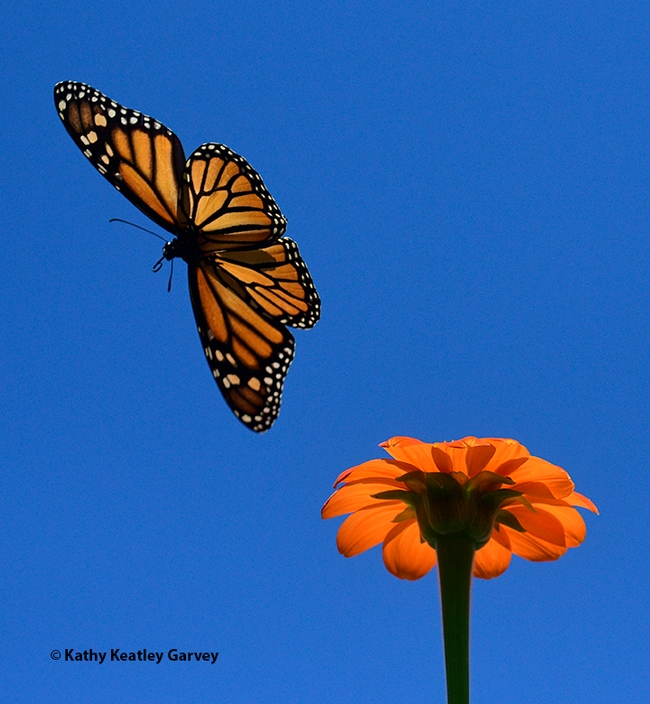Wings up! Let's go!
The monarch fall migration is underway.
"Unlike most other insects in temperate climates, monarch butterflies cannot survive a long cold winter. Instead, they spend the winter in roosting spots," explains Monarch Watch. "Monarchs west of the Rocky Mountains travel to small groves of trees along the California coast. Those east of the Rocky Mountains fly farther south to the forests high in the mountains of Mexico. The monarch's migration is driven by seasonal changes. Daylength and temperature changes influence the movement of the monarch."
"In all the world, no butterflies migrate like the monarchs of North America. They travel much farther than all other tropical butterflies, up to three thousand miles. They are the only butterflies to make such a long, two-way migration every year. Amazingly, they fly in masses to the same winter roosts, often to the exact same trees. Their migration is more the type we expect from birds or whales. However, unlike birds and whales, individuals only make the round-trip once. It is their children's grandchildren that return south the following fall."
Have you seen any migratory monarchs? It's basically a "no" for our scientists at the Bohart Museum of Entomology , UC Davis.
- UC Davis distinguished professor emerita Lynn Kimsey, who directed the Bohart Museum for 34 years until she retired Feb.1: No.
- Bohart Museum associate and UC Davis School of Medicine employee Greg Kareofelas: No. "I still have not seen a monarch (but I have not been 'out and about' much this summer)
- Jeff Smith, curator of the Bohart Museum's Lepidoptera collection: Maybe. "I may have seen 1 monarch in my yard (Rocklin) yesterday (Sept. 16) as a fly-by."
It's not so rosy in the Pacific Northwest (PNW), according to Washington State University entomologist David James, who studies migratory monarchs.
On Aug. 31, he posted this on his Facebook page, "Monarchs in the Pacific Northwest": One month ago, things were looking very rosy in the PNW monarch world with an 82% increase in sightings during June and July compared to the same months in 2023. Sadly, things are now not so rosy if the number of reported sightings are a good barometer of what's happening out there (and they have been in the past few years). During August 2023 there were 172 confirmed monarch sightings in the PNW. This year there has only been 108 and most of these (80%) were in the first two weeks. The second half of August has seen very few monarchs reported in the PNW. I-Naturalist, the reporting site most used by monarch recorders, has had NO monarch sightings posted in OR, WA, ID or BC since August 12-16. This is concerning because the second half of August into September is when the third PNW-bred generation should be emerging and migrating. There is still time for sightings to pick up and hopefully they will. So please keep watching and reporting your sightings to I-Naturalist or Journey North."
One of his WSU-tagged monarchs (from citizen scientist Steve Johnson) fluttered into our garden on Sept. 6, 2016 from Ashland, Ore. (See Bug Squad)
Hoping to see another tagged monarch.
Migrating monarchs began arriving in our Vacaville pollinator garden this year on Sept. 17 for some flight fuel on their way to their overwintering spots in coastal California.
They love the Mexican sunflower, Tithonia rotundifola. It's a great fall nectar source...and the colors are a perfect match...
Wings up! Let's go!
Attached Images:
